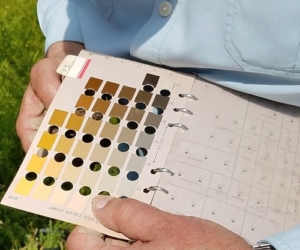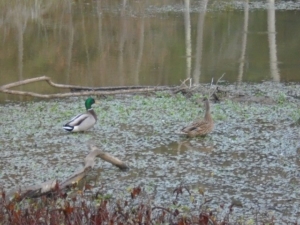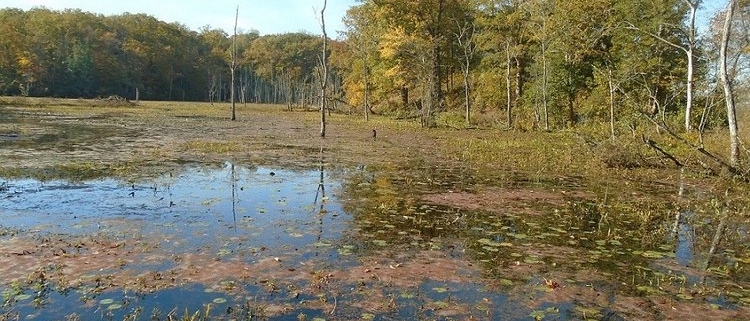The Importance of Wetlands
Feature photo: Mason Neck wetlands
Article and photos by FMN Stephen Tzikas
(Article republished with permission from Audubon Society of Northern Virginia)
My first exposure to wetlands was when I was a child in the 1960s. I frequently saw the inlet of the Raritan River filled with thousands of cattails while sitting in the backseat as my parents drove over the Victory Bridge connecting Perth Amboy and South Amboy, NJ. Much of those wetlands and floodplain around the river contained clay deposits that fueled a large terracotta industry in the 19th and 20th centuries. Some of the most interesting geological finds of these clay areas included gem grade amber with prehistoric insect inclusions.
Later in life, as an engineer, I had some peripheral experiences with wetlands in engineering reviews of Federal construction. That took me to unique environments and terrains such as extreme cold regions, hot deserts, dams, and wetlands. But wetlands also caught my interest because of environmental concerns, which made up a significant portion of my early career. Wetlands are protected and regulated. Many are found here in Fairfax County and local trails will bring you to them and the unique birds found within their boundaries. But before we note wetland birds, something should be said about the history behind protecting wetlands.
Wetland ecosystems protect and improve water quality, offer habitats, provide flood protection and erosion control, maintain surface water flow during dry periods, and present opportunities for recreation and aesthetic appreciation. By the way, those cattails I used to see so frequently are an iconic wetland plant found worldwide in a variety of aquatic ecosystems such as marshes, ponds, lakes, and riparian areas.
Wetlands were considered an obstacle to development. They were often drained for farm land and construction. In the early 20th century, largely due to declining populations of ducks and geese, and the political pressure exerted by hunters, the federal government started protecting habitats for birds. The 1977 Clean Water Act was a big step forward for wetland protection. It protected waterways that resulted in protecting the wetlands that fed into them. Also in 1977, executive orders ended federal assistance for the draining and filling of wetlands. A federal policy of “no net loss” of wetlands became the norm.

Munsell soil test kit
Rutgers University has a regularly recurring one-day continuing education course at their wetlands location: the Environmental Education Center at Lord Sterling Park in Basking Ridge. The Introduction to Wetland Identification course teaches the use of Munsell soil test kits for wetlands. Although an online version of the course exists, the in-person version is better for the practical experience it delivers. Wetland soils are often grey (reduced) or dark brown to black. Use of the Munsell color system assures consistent classification. The course also makes use of dichotomous keys to identify wetland plants.

Huntley Meadows wetlands
The eBird website posts bird sightings at wetlands throughout Fairfax County. Recently, as part of the Fall 2021 Fairfax Master Naturalist class, our field trip to Huntley Meadows wetlands in Alexandria recorded birds along a trail that was just under 2 miles. Birds spotted included: Canada Geese, Mallards, yellowlegs, herons, vultures, eagles, Belted Kingfishers, Northern Flickers, European Starlings, Red-winged Blackbirds, Northern Rough-winged Swallows, Ruby-crowned Kinglets and several types of hawks, woodpeckers, and sparrows. More common birds included Blue Jays, Carolina Chickadees, American Robins, Eastern Bluebirds, Carolina Wrens, crows, Tufted Titmice, and Northern Cardinals. In fact, Fairfax County Parks have documented more than 200 bird species in Huntley Meadows Park.
On another Master Naturalist field trip, we explored a different wetland at Elizabeth Hartwell Mason Neck National Wildlife Refuge. While we didn’t keep count of birds on this trip, it is known to have many types of birds throughout the year including Tundra Swans, Black Ducks, Northern Pintails, Mallards, and many others. High tide is the best time to go because the birds are closer to the shore and will be feeding more actively.




